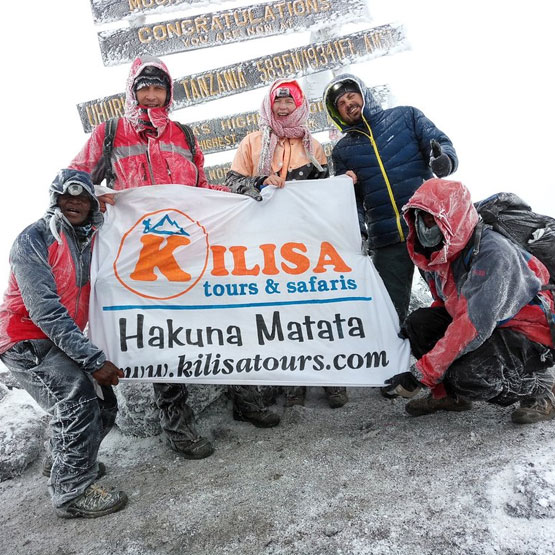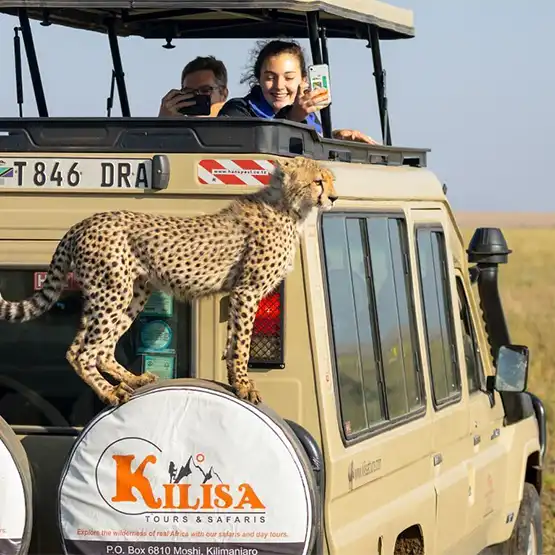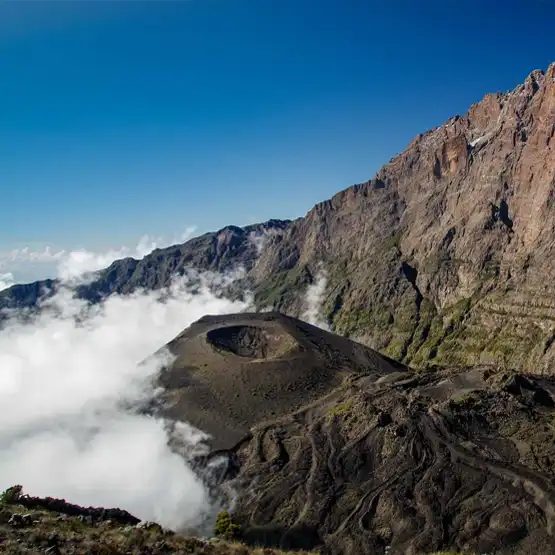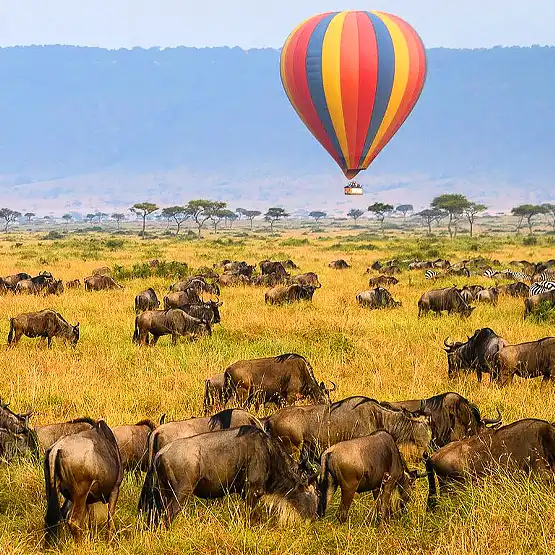It’s amazing to think that only about two-thirds of those who attempt to reach the summit of Kilimanjaro actually succeed. Before you set your heart on conquering Africa’s tallest peak, there are crucial factors you must consider. This isn’t just any hike; it demands serious preparation and careful planning to ensure a safe and successful climb.
One of the most critical aspects is the choice of tour operator. Reviews and success rates can tell you a lot about their reliability. Additionally, the altitude is no joke—knowing the operator’s acclimatization procedures can make or break your experience. Not to mention, the route choice significantly affects your journey, with each path offering different challenges and scenic vistas.

Choosing the Right Tour Operator for Kilimanjaro
Picking the right tour operator for your Kilimanjaro climb is crucial. You’ll want a company with a proven track record and excellent customer reviews. Kilisa Tours, for example, is known for its high success rates and positive feedback. Their experienced guides and well-organized itineraries can make a big difference in your climbing experience. It’s important to do your research and choose wisely.
Check the safety standards and emergency procedures of the tour operator. Knowing how they handle altitude sickness and other emergencies is vital. Also, the best operators provide good quality gear and equipment. Look at what is included in the tour package. A reliable operator will ensure you have everything needed for a safe climb.
Cost is another significant factor. While you don’t want to choose the cheapest option, it’s essential to see what your money gets you. Some operators include extra services like airport transfers and accommodation before and after the hike. According to this post, holiday season packages might offer some amazing inclusions.
Lastly, consider the company’s commitment to ethical tourism. Do they respect local communities and environments? Kilisa Tours, for example, adopts sustainable practices and fair labor standards. This ensures your adventure also supports the local economy in a positive way.
Evaluating Kilisa Tours’ Reputation and Success Rates
Evaluating Kilisa Tours’ reputation is essential before booking your Kilimanjaro climb. Reading customer reviews on various platforms can provide insights into their service quality. Many climbers have praised Kilisa Tours for their well-trained guides and excellent customer service. The positive feedback highlights the company’s dedication to client satisfaction. It’s reassuring to know others had great experiences with them.
Success rates are another crucial factor to consider. Kilisa Tours boasts a high success rate, with many climbers reaching the summit. This statistic speaks volumes about their expertise and the effectiveness of their acclimatization strategies. They prioritize climber safety and proper altitude acclimatization. Their detailed itineraries ensure you’re physically prepared for the ascent.
When it comes to safety, Kilisa Tours does not compromise. They follow stringent safety protocols and provide reliable emergency backup. In case of any issues, their guides are trained to handle emergencies effectively. Equipment provided is also top-notch, ensuring you have all the necessary gear for a safe climb. According to the article here, their commitment to safety is one of the reasons for their high success rate.
Transparency in communication is another key aspect of their reputation. Kilisa Tours offers clear details about their services, inclusions, and prices. There are no hidden fees, and everything is explained upfront. This transparency builds trust and ensures you know exactly what you’re getting. It’s always better to choose a tour operator that values honesty and integrity.
Understanding the Best Season to Climb Kilimanjaro
The best season to climb Kilimanjaro depends on weather patterns and personal preferences. Generally, the most popular times are during the dry seasons, which are from late June to October and from late December to February. These months offer the best chances for clear skies and less rain. Climbing during the dry season also means fewer muddy trails. However, it’s also the most crowded.
Contrarily, the rainy seasons, which occur from March to May and November, have their advantages. Although trails can be wet and slippery, the mountain is less crowded. This might provide a more serene and personal experience. Moreover, the landscape is lush and green, offering stunning scenery. But be prepared for potentially challenging weather conditions.
Avoiding peak season might also be wise. The peak periods can be busy, making campgrounds crowded and services stretched thin. If you prefer a quieter climb, consider the shoulder seasons. These periods are just before and after the main dry seasons, offering a good compromise. You still get reasonable weather and fewer crowds.
Choosing the best time also depends on what you’re comfortable with. According to this article, some adventurers prefer climbing during special events like Christmas and New Year. These times can offer unique experiences but come with their own challenges. Evaluate what’s important to you and plan accordingly.
Assessing Physical Preparation and Fitness Levels
Climbing Kilimanjaro is no small feat, so physical preparation is essential. You need to be in good shape to handle the long days of hiking. Start by building your endurance with regular cardio exercises. Hiking, running, and cycling are fantastic ways to boost stamina. Your fitness routine should begin at least a few months before the trip.
Strength training is another crucial aspect. Focus on your legs, core, and upper body. Exercises like squats, lunges, and planks will prepare your muscles for the climb. Don’t forget about your back and shoulders, as you’ll be carrying a backpack. A well-rounded training program is key.
Altitude sickness is a significant risk on Kilimanjaro. Proper acclimatization is vital to reducing this risk. Kilisa Tours includes rest days in their itineraries to help with acclimatization. Hydration and a steady pace also play critical roles. The better prepared you are, the more enjoyable your climb will be.
Regular treks on weekends can be very beneficial. It’s excellent practice to hike on varied terrain. Try to emulate the conditions you’ll face on Kilimanjaro. This means carrying a backpack and wearing the gear you’ll use. The more realistic your training, the better.
Monitoring your fitness progress is essential. Use a fitness app or keep a journal. This helps you see how far you’ve come and what areas need more work. Aim to improve steadily rather than trying to do too much too soon. Slow and steady wins the race.
Lastly, consult with a healthcare provider before starting your training. They can offer personalized advice and ensure you’re fit for the challenge. This step is often overlooked but quite important. Your health and safety should always come first.
Selecting the Appropriate Route for Your Skill Level
Choosing the right route to climb Kilimanjaro is important for a successful ascent. There are several routes to consider, each with its own unique challenges and scenery. For beginners, the Marangu route is often recommended. It’s known as the “Coca-Cola route” and offers hut accommodations instead of tents. This makes it a bit easier for those new to high-altitude trekking.
The Machame route, also known as the “Whiskey route,” is more challenging but incredibly rewarding. It offers beautiful vistas and a diversity of ecosystems. This route requires a good level of fitness. Be prepared to camp and experience steeper climbs. The scenic beauty and thrill are worth the effort.
If you have solid hiking experience, consider the Lemosho route. It’s less crowded and provides excellent acclimatization. The route takes about eight days, giving you more time to adjust to the altitude. It’s known for gorgeous landscapes and a higher success rate. The extended duration makes it easier on your body.
For the more adventurous, the Northern Circuit is the longest route. It offers stunning remote scenery and ample acclimatization time. This route circles the mountain, offering varied and unique views. It covers more ground, so be ready for a longer journey. The quieter paths reward seasoned hikers.
Consider the Rongai route if you prefer a quieter trail. Starting from the north, it offers a different perspective of the mountain. It’s less crowded and provides a more serene experience. The climb is more gradual, making it suitable for climbers looking for a less strenuous option. It’s a great choice for a peaceful ascent.
A table comparing these routes can provide clarity:
| Route | Difficulty | Duration | Scenery | Accommodation |
|---|---|---|---|---|
| Marangu | Easy | 6 days | Moderate | Huts |
| Machame | Moderate | 7 days | High | Tents |
| Lemosho | Moderate | 8 days | High | Tents |
| Northern Circuit | Hard | 9 days | Very High | Tents |
| Rongai | Easy | 7 days | Moderate | Tents |






